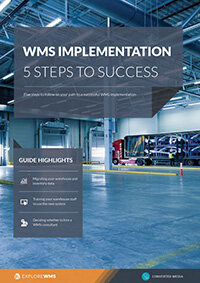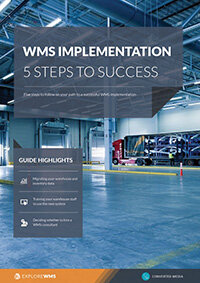Five WMS integrations which boost warehouse efficiency
Gone are the days of standalone software, and your warehouse management system must be on the list of platforms to integrate.
Using a siloed WMS forces staff to work harder and longer on tasks other platforms can automate, introduces the chances of people missing vital information that isn’t placed in order or customer files and introduces unnecessary roadblocks.
There are plenty of gains you can achieve by opening the data in your WMS. We’re going to look at five such opportunities that you should prioritize first.
1. ERP (Enterprise Resource Planning)
ERP systems serve as a giant repository for all your company data. They create, collate, combine, process, distribute, and use information from every discipline for the benefit of every operation. They’re designed to be as direct as possible because of this broad use.
Integrating your ERP with a WMS typically puts all of your warehousing data into a clean and simple interface, making it easier for all stakeholders to know what’s going on and plan accordingly. ERP integration also tends to reduce redundant data, which means you’re always working on your best set of information.
Give yourself an entire picture of your operations.
2. TMS (Transportation Management Systems)
Generate a clearer picture of your overall operational efficiency by tying your TMS with your warehouse management, especially if you’re in the manufacturing or distribution space.
It’s time to bust down those traditional silos so you can look from end to end for planning and forecasting purposes as well as audits of your performance. Linking up with your TMS can help with demand planning and space allocation
3. CRM (Customer Relationship Management)
The ERP integration takes care of your internal data, and many will integrate with CRM tools as well, but sometimes an ERP can’t hand off all of your warehousing data to the CRM.
WMS integration with CRM tools means you’ll be able to track customer activities from opportunity to order capture and through order processing and fulfillment. You can also tie satisfaction and testimonial email campaigns to warehouse efficiency and shipment status.
Guide: WMS implementation - 5 steps to success
It’s essentially an opportunity to create a real-time load plan for your trailers and shipments on other modes, plus many opportunities to run a more detailed analysis of your entire operation’s performance.
4. CMS (Customs Management Systems)
A customs management system is the “other CMS” and can be a major boon to bonded warehouses. Pairing it with smart picking through your WMS can ensure that you’re choosing the most fiscally sound option for your orders based on order characteristics or other requirements.
A customs system will manage all the relevant administration tasks for your clients while integrating it with a WMS can do the same for your warehouse managers. You’ll be able to optimize declarations and perform relevant checks before you’re sending anything to customs.
It’s not a must-have for everyone, but it’s definitely a requirement for anyone dealing with complex shipping operations.
5. Existing custom software
The final software opportunity to consider is anything that your company uses for daily operations or forecasting that you’ve built yourself or had crafted custom. Anything that could use warehouse data or currently requires you to export information to a file and then upload it elsewhere is a prime target.
Not only does integration in a general sense reduce the chance of human error, but it also gives you more opportunities to analyze broad company data and more chances to improve your workflows and efficiency.
Free white paper

WMS implementation guide
Plan your WMS implementation successfully with this comprehensive guide

Featured white papers
-

-

-

WMS implementation guide
Plan your WMS implementation successfully with this comprehensive guide
Download
Related articles
-

WMS implementation guide including checklist & project plan
A guide to the entire WMS implementation process - from change management planning to go-live
-

Mission-critical features of food lot traceability software
What features of food traceability software will help you during a food recall
-

If I had known then: steps to successful WMS implementation
A guest blog from PathGuide takes us through the steps of a successful WMS implementation

